YAMAROKU SOY SAUCE

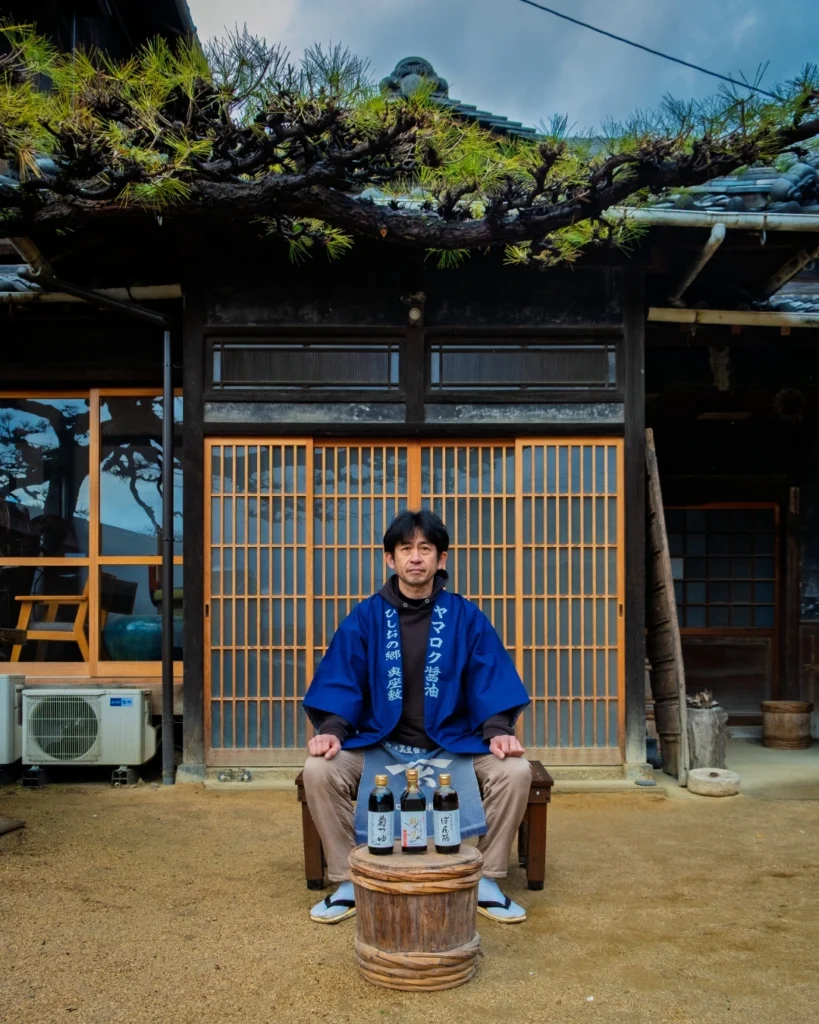
From salt‑born legacy emerges a soy sauce dynasty.
"Cedar Chambers of Time" (1900–1945)
In late 19th-century Shodoshima, where sun-kissed salt beds met emerald hills, Rokurobe Yamamoto; descended from Hyōgo’s Akō clan; began an alchemical transformation. He took the island’s salt-making heritage and, like a sculptor, reshaped it into a liquid art that would age over centuries. Naming his creation Yamaroku; “mountain’s foot” and “six”—he anchored his dream to the very earth that nourished it. And thus began a lineage destined to ferment history itself.
Scroll
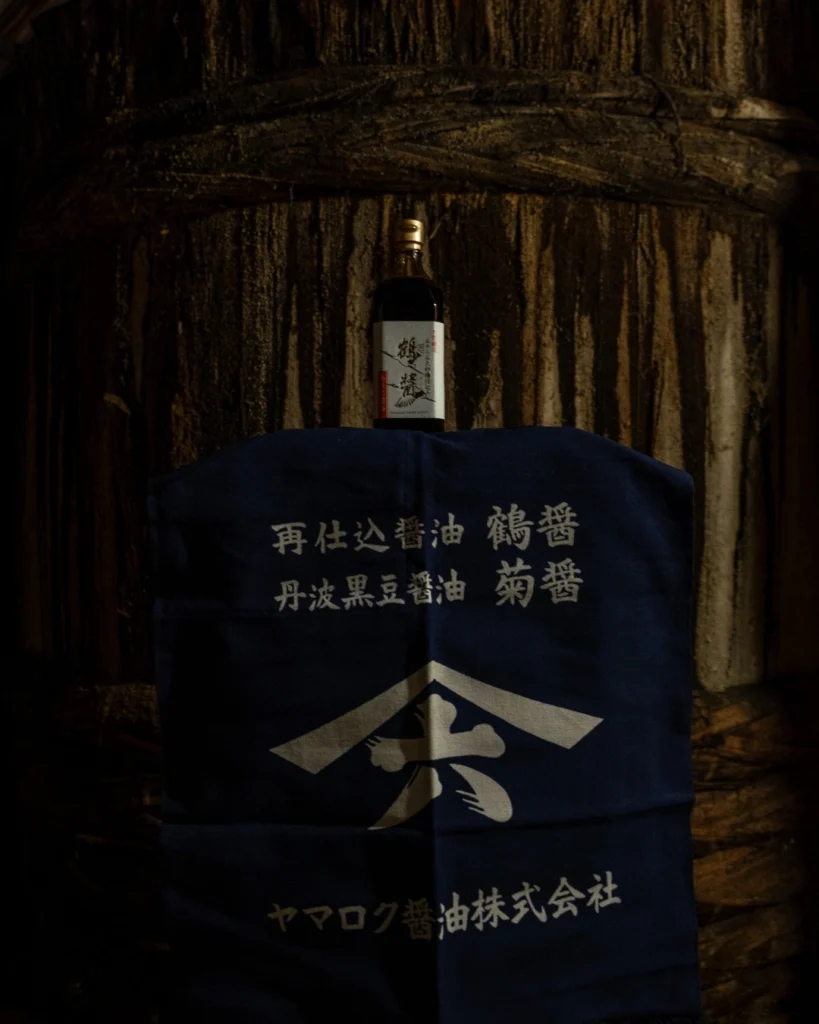
Old barrels, older breaths of life.
Cedar Chambers of Time (1900–1945)
Over the first half of the 20th century, Yamaroku’s vast kioke barrels—standing three stories tall—absorbed more than mere soy mash. Their hollow cedar hearts, kissed by generations, cultivated microcosms of lactobacilli, yeasts, and fungi. As the barrels aged, they wove living memory into their staves: libraries of microbial lore that infused every drop of soy sauce with arcs of flavor untamed by time.
Scroll
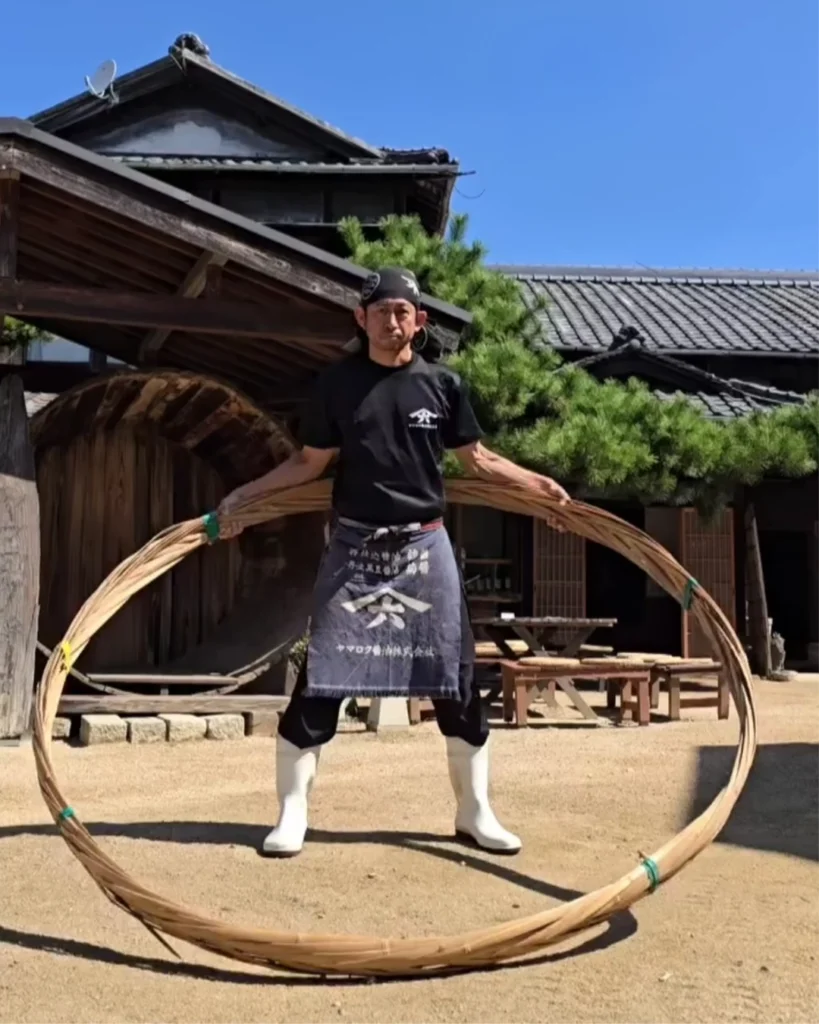
When efficiency nearly silenced tradition.
"Post‑war Decline & Silent Resolve" (1945–1970)
After the war, steel and plastic barrels seduced most soy producers with speed and cost savings. But amidst the din of modernization, Yamaroku placed loyalty above profit. As rivals abandoned their barrels, the Yamamotos held fast. Their kioke, like silent ancestors, sheltered microbial worlds that would one day whisper back to life.
Scroll

The fifth generation, summoned by heritage.
"A Son Returns" (1970–2000)
Yasuo Yamamoto once walked away from the “world” of soy, seeking the comforts of modern life. Yet the call of kioke proved irresistible. He returned to Shodoshima, greeting each dawn with a wooden paddle and a fervent oath: to stir, tend, and coax harmony from chaos. The fermenting vats became his crucible; oppressive heat in summer, biting cold in winter, relentless daily labor, a life lived in bubbles. His redemption lay not in escape, but in devotion.
Scroll
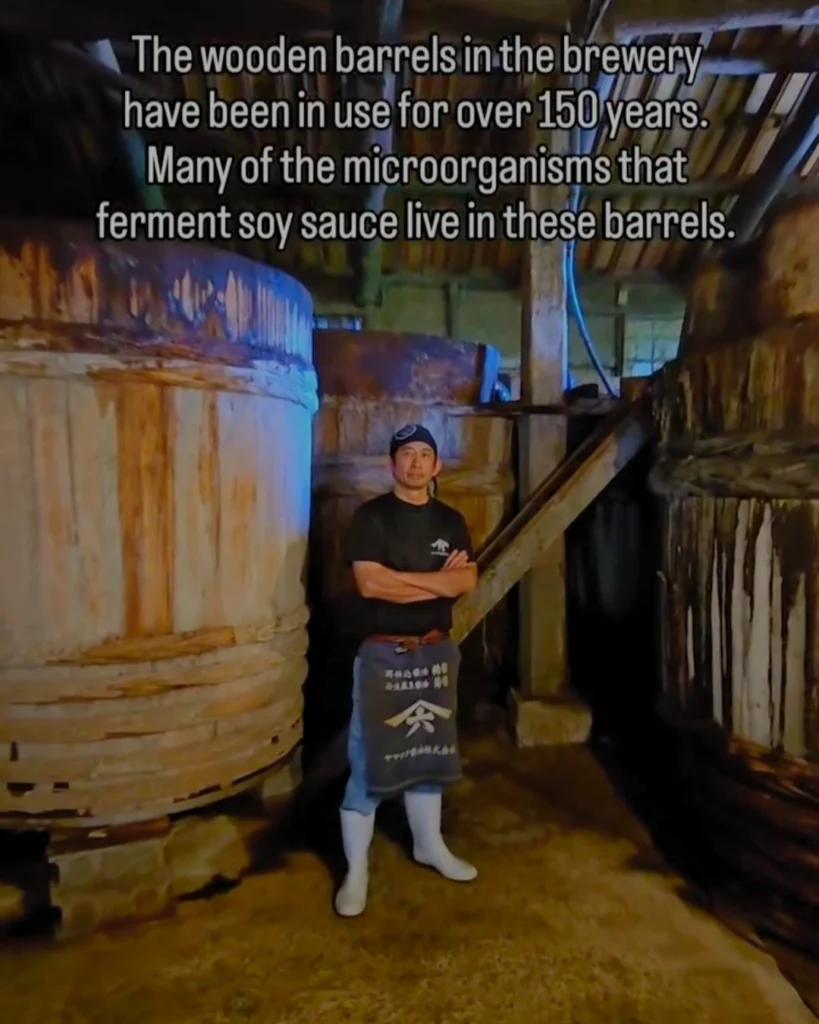
Not wood, but living vessels teeming with history.
"Liquid Library: The Kioke Barrels"
Far from mere containers, Yamaroku’s kioke are characters in their own right—old souls singing microbial lullabies. Each vessel, holding thousands of liters, evolves with every season, breathing through cedar pores, feeding generations of yeast and fungi. Yasuo’s apprenticeship with Fujii Kioke craftsmen resurrected this art—a communion of wood and will.
Scroll
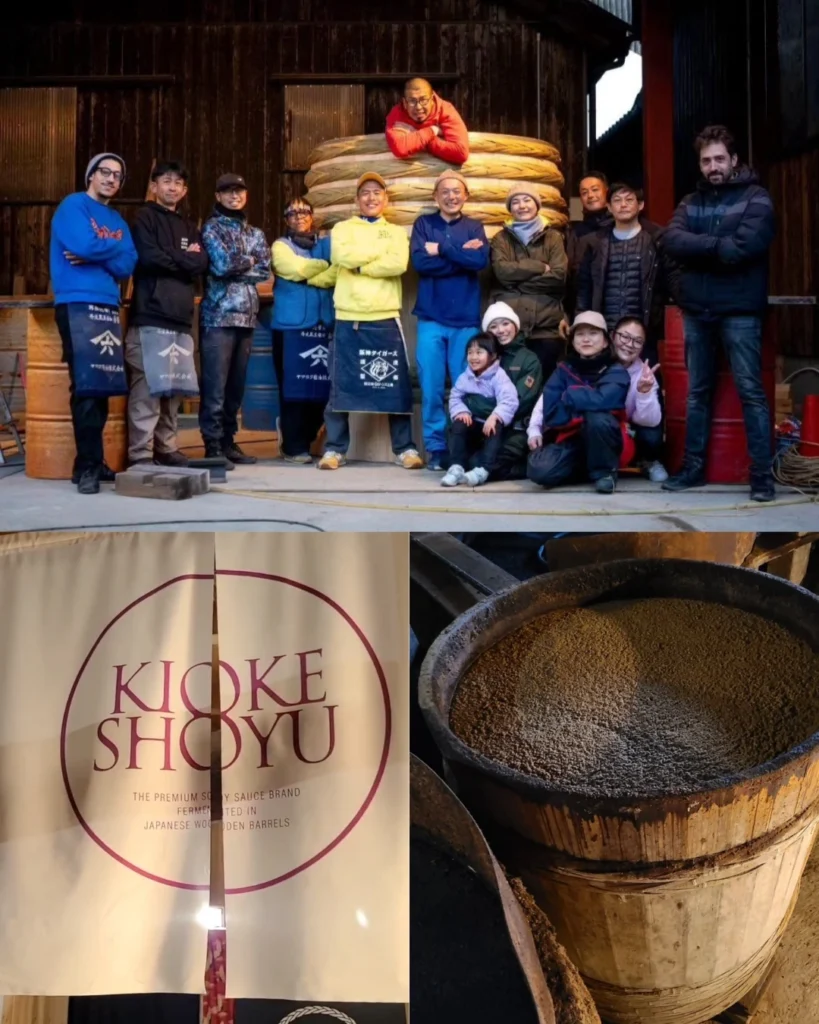
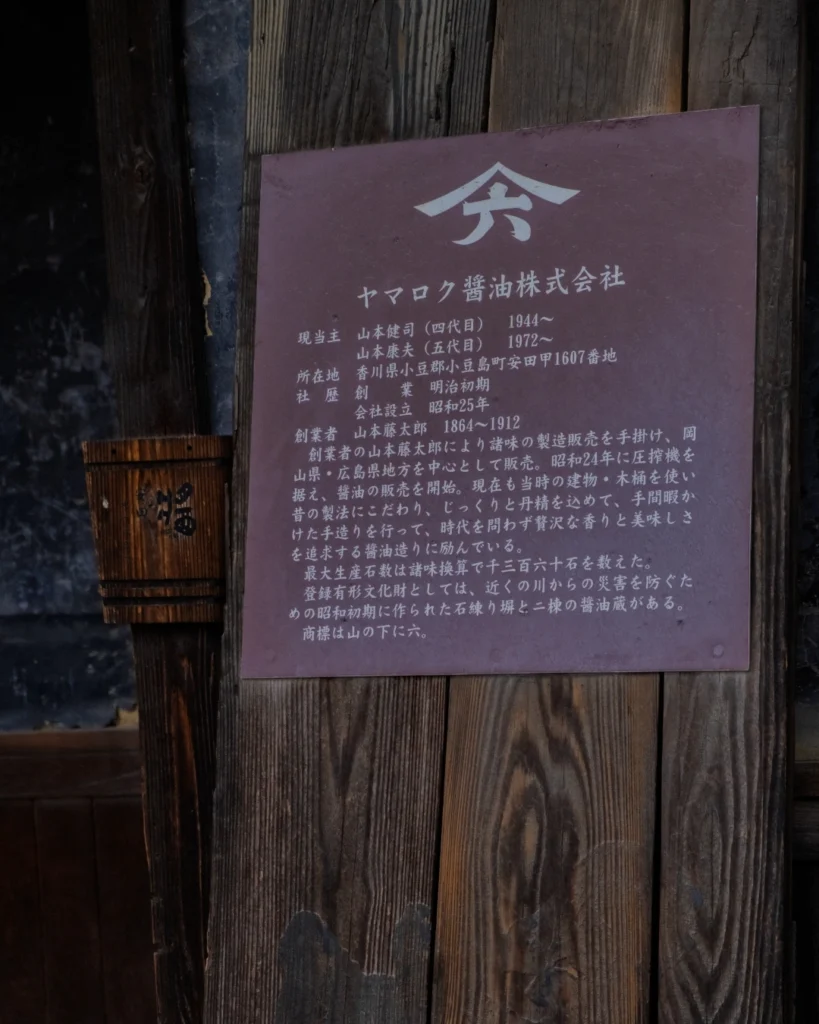
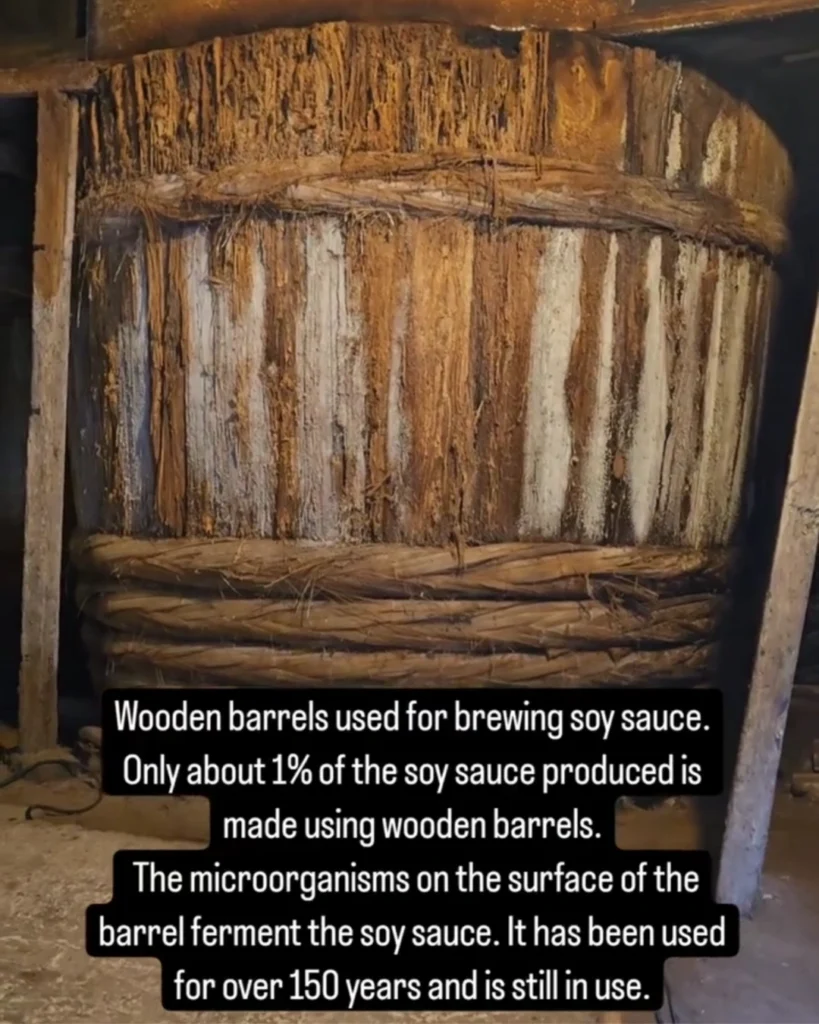
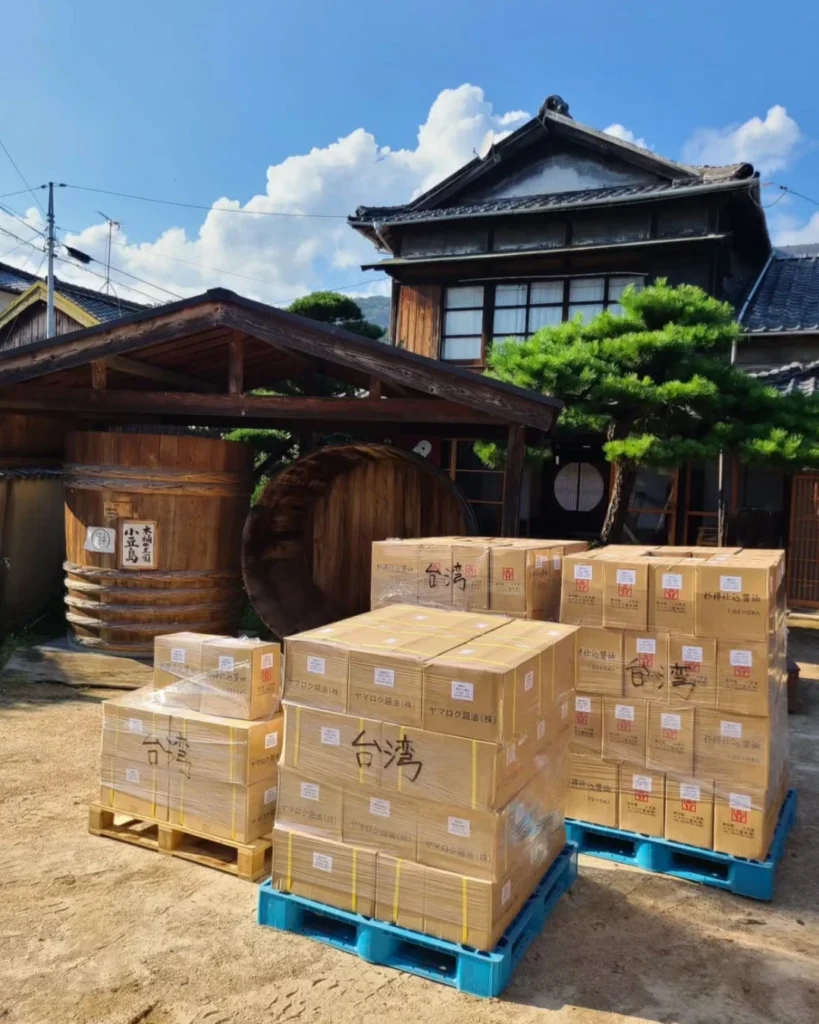
Reawakening Japan’s hidden artisans.
"Revival of Craft" (2000–2012)
Confronting the twilight of kioke-makers, Yasuo borrowed heavily and commissioned nine new barrels in 2009. They apprenticed under the last master, and by 2012, launched the Kioke Craftsmen Revival Project. Through sawdust and sweat, they rekindled a fallen art, inspiring fellows to build barrels of their own—each stave a testament to tradition.
Scroll
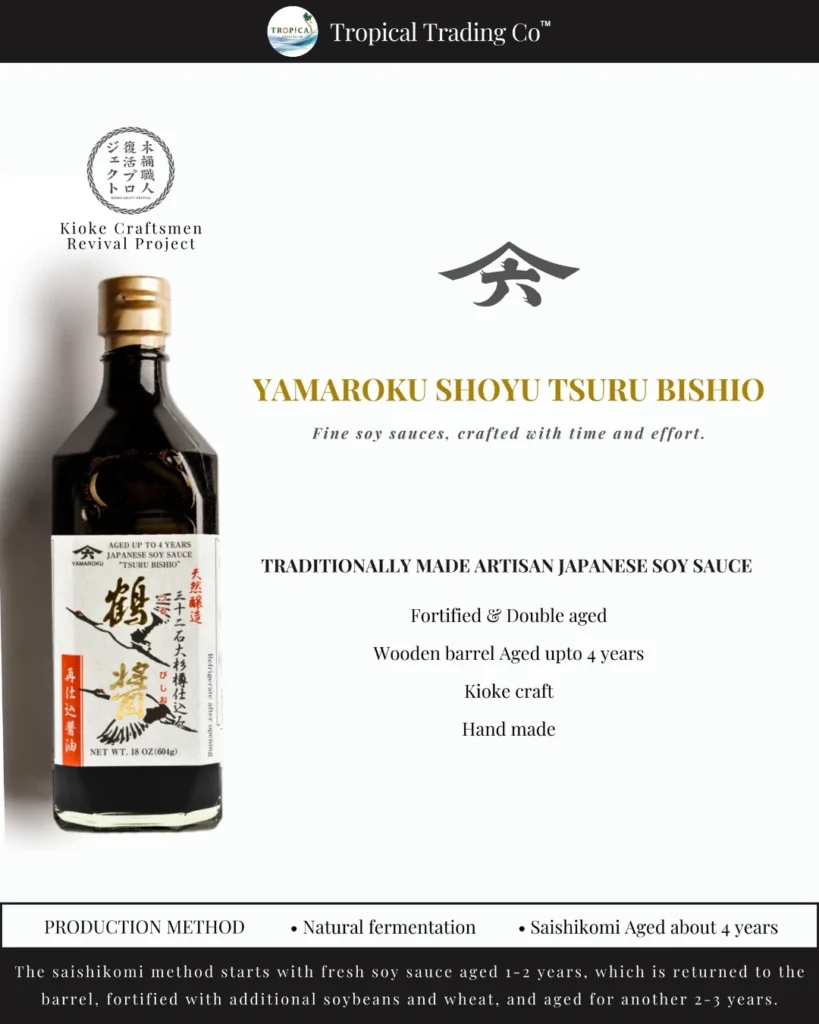
A second breath amplifies depth.
"Double Alchemy: The Saishikomi Way"
At the heart of Yamaroku stands Tsuru‑bishio, born of saishikomi—breadth of time captured in four years. The mash ferments twice: once to awaken, again to refine. Its umami soars beyond 2.3 (vs. ~1.5 in typical dark soy sauce), while sodium rests gently at 15–16%. The result is lunar in depth: understated, voluptuous, utterly unforgettable.
Scroll
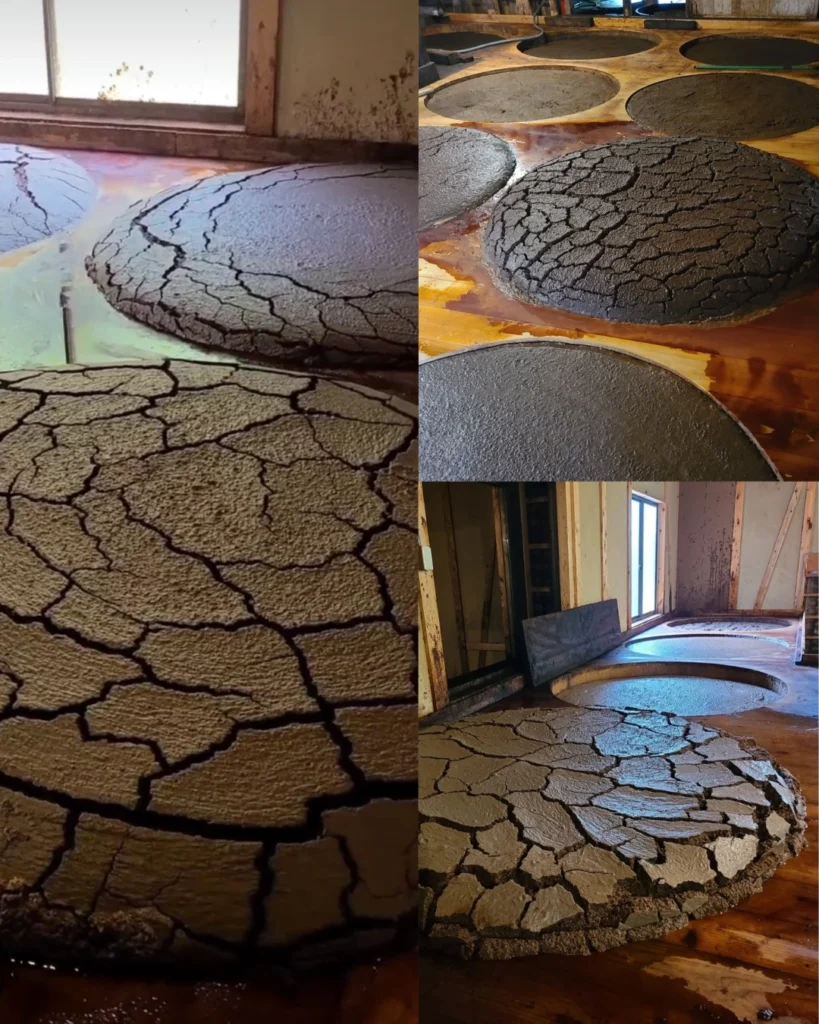
Invisible artisans shape each flavor note.
"Microns & Seasons: The Life of Bacteria"
100+ microbial strains, choreographed by time.
Each kioke houses a symphony of over a hundred microbial players—yeasts, lactobacilli, fungi—each one awakening under specific temperatures, humidity, and season. Their interplay creates Yamaroku’s deep, nuanced soul—a complexity modern science still seeks to decode.
Within these vessels, over a hundred micro-organisms perform an annual ballet:
Spring whispers of apples and melons as yeasts awaken.
Summer roars with microbial energy, bubbles bursting—each stir a poetic act.
Autumn/Winter welcomes lactic calm, smoothing edges.
Even the barn’s mud walls pulse with microbial life, an echo of centuries past.
Scroll
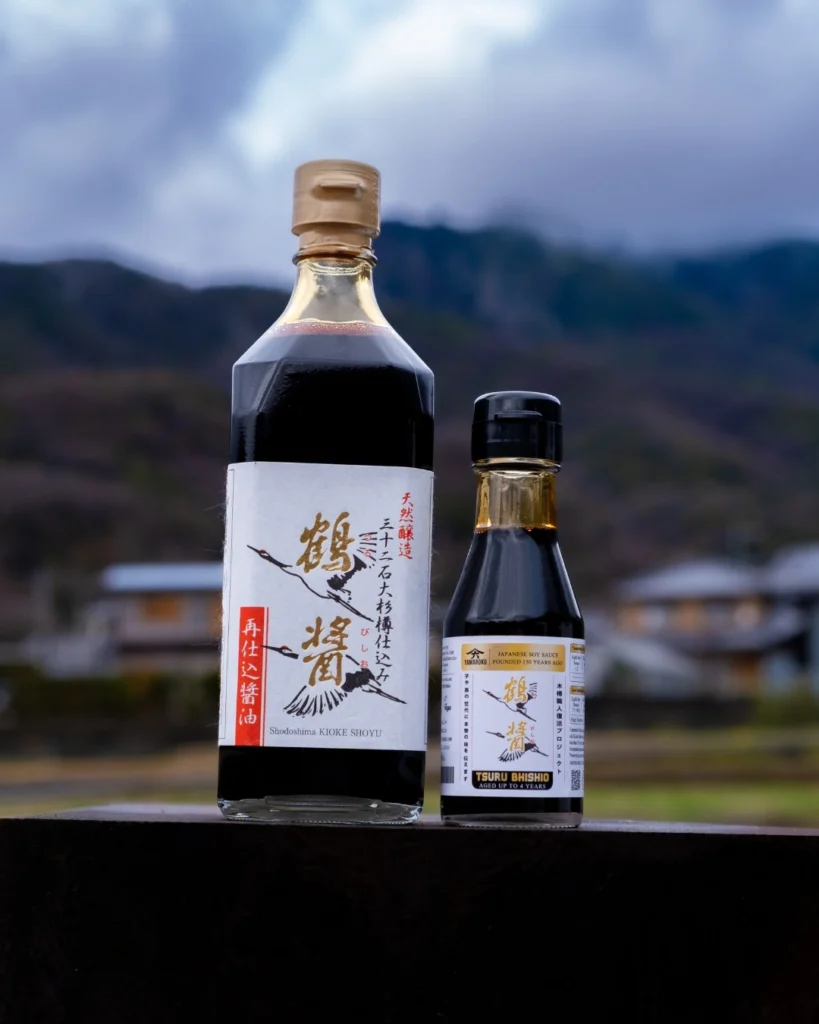
Sun‑warmed winds and salt‑sprayed breezes co‑write the recipe.
"Elemental Chorus: Shodoshima’s Microclimate"
Shodoshima is no ordinary island—it breathes an ancestral tune. The Mediterranean-like sunshine dries the air. Mountain winds flow from Kankakei Gorge, tempering temperatures with salt-kissed breeze. Cedar, microbe, and climate breathe as one—nature’s co-author in Yamaroku’s story.
Scroll
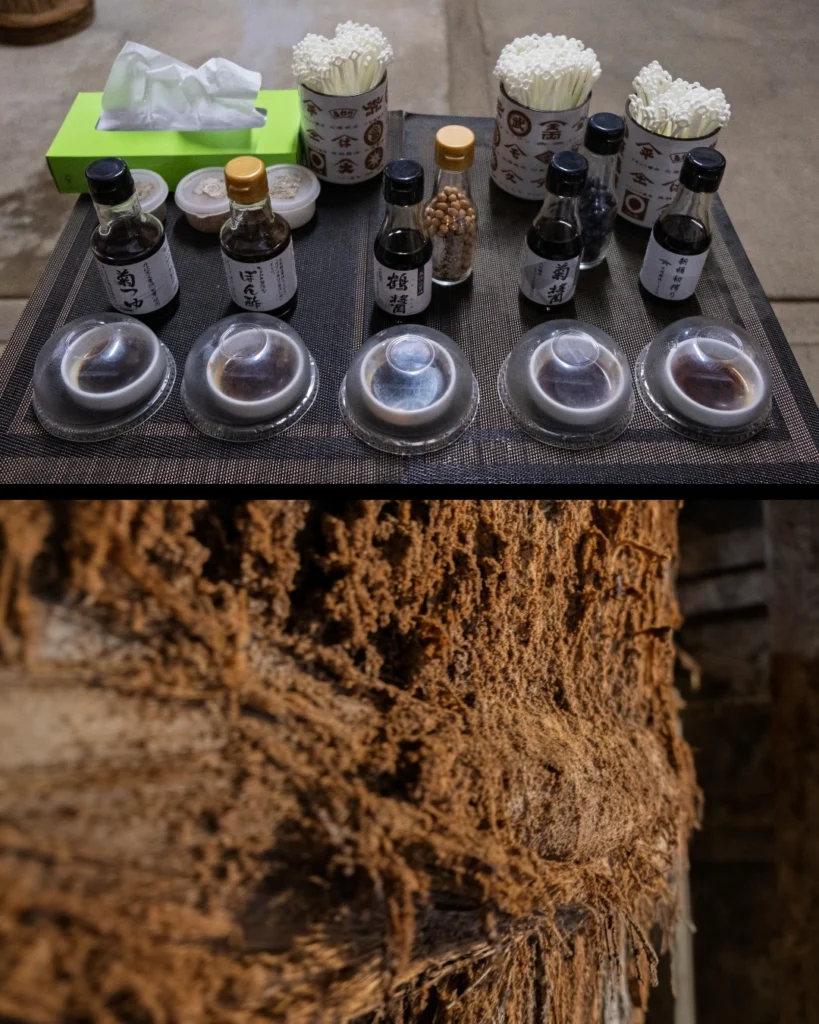
Heritage isn’t just old—it’s alive.
"Cultural Pillar: The Fermentation House"
Their century-old brew-house is no relic—it is a Registered Tangible Cultural Property. It lives and breathes: floors, beams, and walls pulsing with microbial ecosystems. Whenever the mud crumbles, it is reapplied, preserving the microbial lineage—like adding layers to a living fresco.
Today, Yamaroku carries nearly 90% of Japan’s kioke-aged output. Yasuo shepherds each vessel—no hands-off factory, only devotion. Each batch is woven with intention, patience, reverence, and prayer. It is more than production… it is purpose.
Scroll
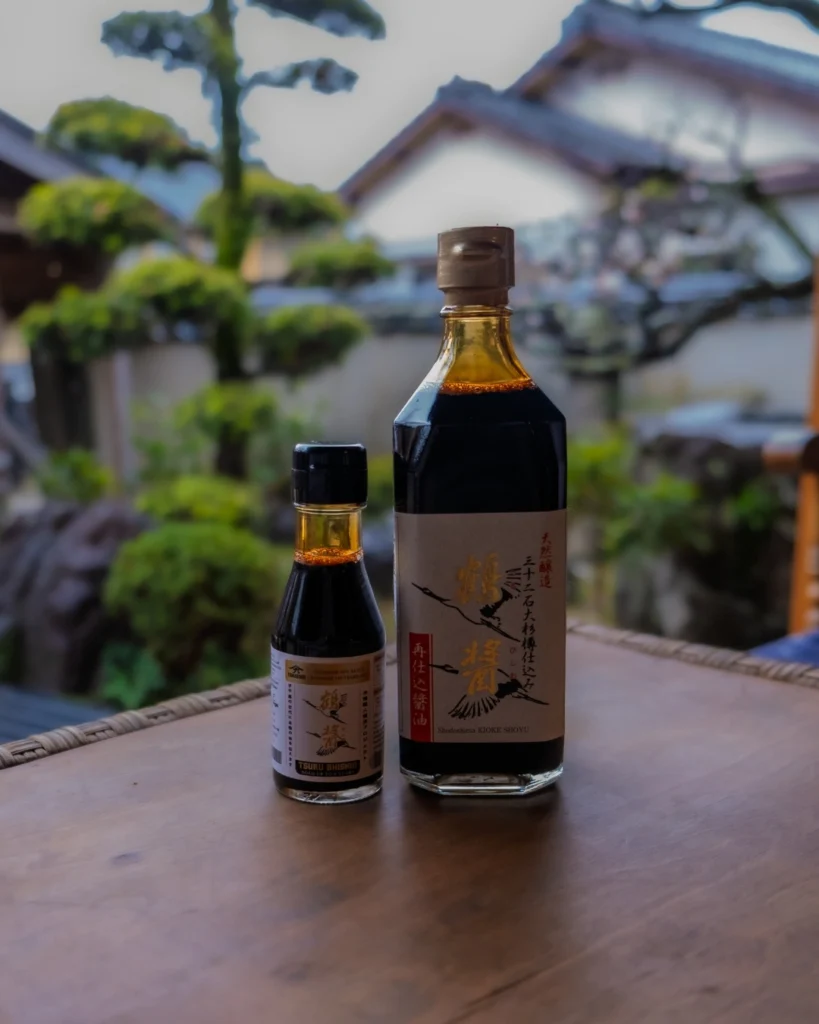
From local legend to global soundtrack.
"Global Applause: From Island to World"
Yamaroku’s saga has graced global stages:
BBC Travel titled it “Is Japan losing its umami?”
Japan Times called kioke the country’s soul.
Featured in Netflix’s Salt, Fat, Acid, Heat, CNN, WSJ, Great Big Story.
Spruce Eats crowned Kiku-bishio “Best Overall Soy Sauce.”
Documentarians capture the awe as visitors walk into the fermenting cathedral—it’s not soy sauce… it’s revelation.
Scroll
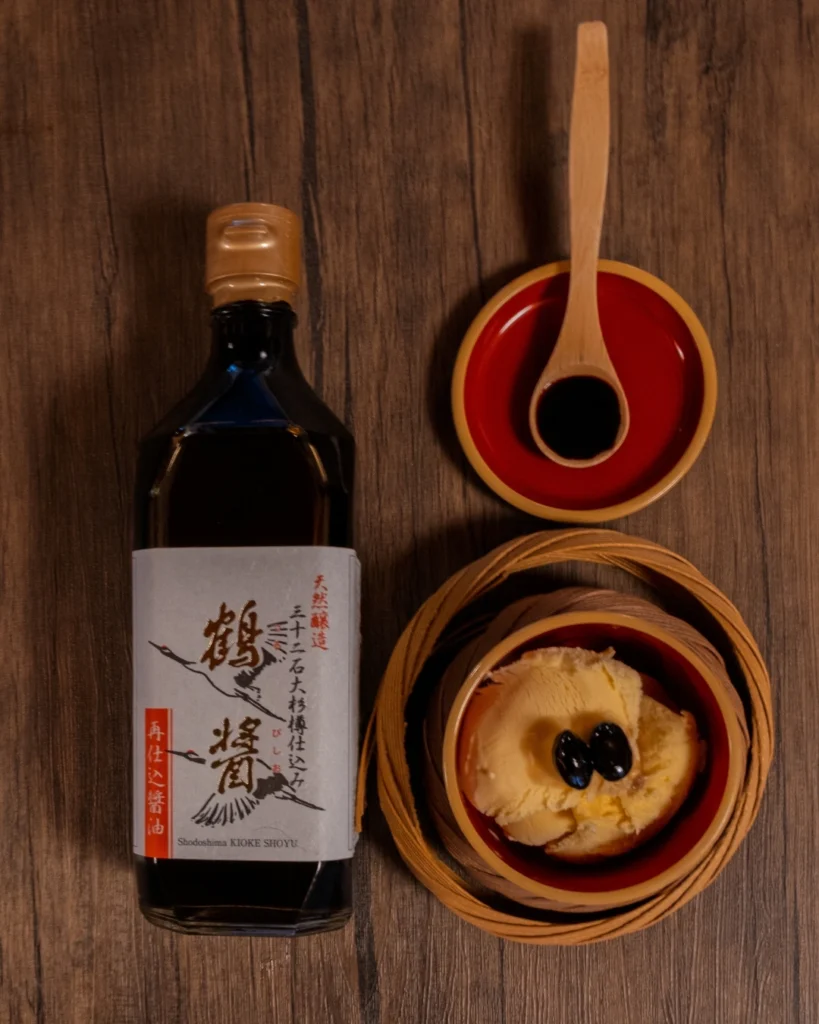
From omakase to Michelin.
"A Culinary Muse"
Chefs swirl Yamaroku into unexpected realms: drizzled on vanilla ice cream for caramel mystique; whispered into tartare for mineral breath; brushed onto grilled fish for cedar-kissed glaze. Its presence transforms a dish from meal to memory.
